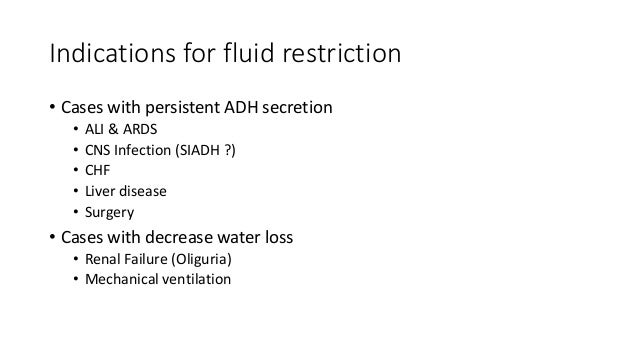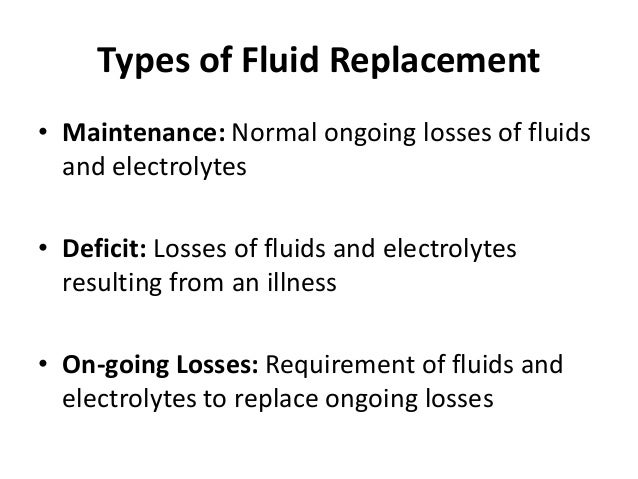

This can be simplified for each of the giving sets: Type of giving Setĭesired rate ml/hr ÷ 4 = no. You can now work out how many "drops per minute" the IVI should drip: Formula: (desired rate ml/hr x giving set drops per ml)/60 = no. What rate do you want the fluids to run at - in mls/hr.Every time you set up an IVI you should check on the giving set package to determine what type you are using.There are three types of giving sets available at QECH To work out how fast the IVI should drip the first you need to first determine two things:

Calculating How Fast The IVI Should 'Drip' Show the mother how many syringes or cups to be given at each feed.

Maintenance fluid calculator peds how to#
How to make up fluids containing 5% or 10% Dextrose.Calculating how fast the IVI should drip.20 ml/kg/24-hours = 1 ml/kg/hr for the remainderĬalculate the maintenance water required for a 17kg child? Click here for the answer.Ĭalculate the maintenance water required for 30 kg child? Click here for the answer.Fluid Management Before Giving IV fluids - THINK - does this child need IV fluids?īe particularly careful with infants and in severe malnutrition.50 ml/kg/24-hours = 2 ml/kg/hr for the 2nd 10 kg.100 ml/kg/24-hours = 4 ml/kg/hr for the 1st 10 kg.The 24-hour number is often divided into approximate hourly rates for convenience, leading to the "4-2-1" formula. The Holliday-Segar nomogram approximates daily fluid loss, and therefore the daily fluid requirements, as follows:Įven though it is correct to think about fluid requirements on a 24-hour basis, the delivery pumps used in hospitals are designed to be programmed for an hourly infusion rate. Holliday and Segar determined how many calories a patient burns as a factor of weight. The diagram below is taken from their original publication "The maintenance need for water in parenteral fluid therapy", Pediatrics 1957. Caloric expenditure, and therefore the water requirement, for the hospitalized patient can be estimated from the nomogram shown below.This means that for every 100 kcal burned, the patient utilizes 100 ml of fluid. Total daily water requirement to replace insensible and urinary water loss in the hospitalized patient is approximately 100 ml/100kcal/day.Water loss (and therefore water requirement) is a function of caloric expenditure.Holliday and Segar collated information from a number of studies, including their own, and concluded the following: This formula is based on the energy expenditure of healthy children, with 1 mL of fluid provided for each kcal expended, or 1500 mL/m2 per day. The commonly used method for approximating water loss (and therefore the water requirement) is based off of the Holliday-Segar nomogram. The resting energy expenditure in healthy children is vastly different from those with an acute disease and/or illness or after surgery. It is clinically useful to begin fluid therapy by estimating normal maintenance requirements using the estimated caloric expenditure method.


 0 kommentar(er)
0 kommentar(er)
